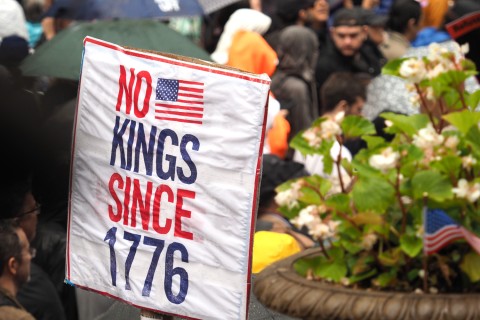The Byzantine Lists
In our "Books Change" series, historians of religion consider books that have changed us or have themselves been changed.
Not long after graduating from college, I found myself editing Christian History magazine, a richly illustrated quarterly where most of the contributing writers were academics but most of the readers were not. Honestly, I had more in common with our readers than with our authors. On my way to a B.A. in English literature, I had taken one class in Christian thought, one in Western civ, and zero in church history. I also had basically no exposure to Christian traditions other than evangelical Protestantism.
From time to time, review copies of new church history books would land on my desk, even though the magazine didn’t print book reviews. Feeling bad about accepting free books on false pretenses, and needing content for a weekly e-mail newsletter, I started writing some quick reviews—quick, because the newsletter was only budgeted to take three hours a week, and because I frankly didn’t have a whole lot to say.
Undaunted by my unpreparedness, in 2000 I tackled one of those books mailed to me, The Byzantine Lists: Errors of the Latins, by Tia Kolbaba. I suppose it was an odd choice. The lists themselves were written by medieval Orthodox clergy to identify all of the ways that Latin Catholics had strayed from the true faith, and to keep other Orthodox who encountered these Catholics (through Crusades, travel, or trade) from copying their abominations. Because the lists featured a strange assortment of “errors,” from the filioque clause to priestly beardlessness to the eating of unclean meats, Westerners had never taken them very seriously. But Kolbaba was convinced that these lists held a key to understanding both the East-West schism and what was just beginning to be known as “lived religion.” In the couple of hours I spent with her book, Kolbaba convinced me, too.
One of the reasons Kolbaba succeeded was the transparency of her writing. I knew next to nothing about her field or her subject, but she gave me the necessary information to follow what she was trying to do. She quoted her source texts at length in clear translation, with notes on authors, audience, and publication. She recounted how other scholars attributed the East-West schism to politics or economics and explained why these interpretations were inadequate. She dealt sensitively with Byzantine mentality and liturgical theology.
Most winsomely, she laid bare her thought process as she moved from the texts through her analysis. On page 28 she wrote, “Who read or heard these lists? It is a vexed question, for it is ultimately unanswerable. Nevertheless, we can venture a few conclusions.” I wasn’t used to seeing questions, or such uncertainty, in academic writing. A few pages later, Kolbaba admitted her difficulty in deciding how to approach the contents of the lists. Imposing categories on the various errors “could reduce the lists’ ability to reveal aspects of their culture,” while taking one list as normative and treating the others as variations “would implicitly confer some sort of special status on the base text.” She opted to take the list items in order of the frequency with which they appeared. I, of course, had no way to evaluate this choice, but I was really glad that she explained how she made it. It was like a mountain climber revealing the handholds she used on her ascent, rather than shouting down from unreachable heights.
Getting this peek into the process of historical scholarship helped me believe that I could be a historian as well. Two years later, I was enrolled in a Ph.D. program. And I was better prepared for both scholarly work and for life in the scholarly community thanks to Kolbaba’s examination of the myriad ways religious people misunderstand each other.
As I made ready to leave the world of evangelical publishing for—gasp!—a secular university, I heard plenty of variations on “the errors of the liberals.” In turn, some folks in the academy delighted to expound on “the errors of the evangelicals.” Both sides were right, and wrong, and nervous about their own identity. “[W]e tend to accuse our enemies of what we most hate and fear in ourselves,” Kolbaba noted in her conclusion (166)—another handhold for navigating rocky terrain.
Our weekly feature Then and Now harnesses the expertise of American religious historians who care about the cities of God and the cities of humans. It's edited by Edward J. Blum and Kate Bowler.




